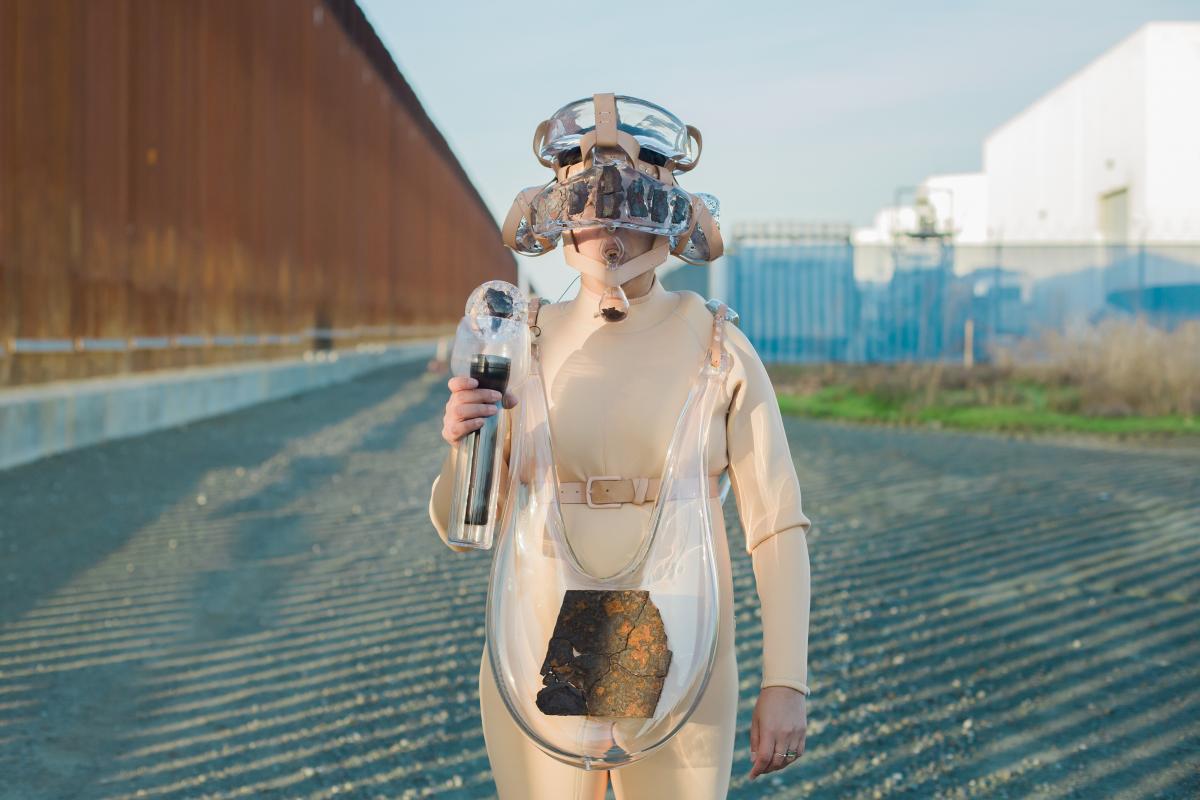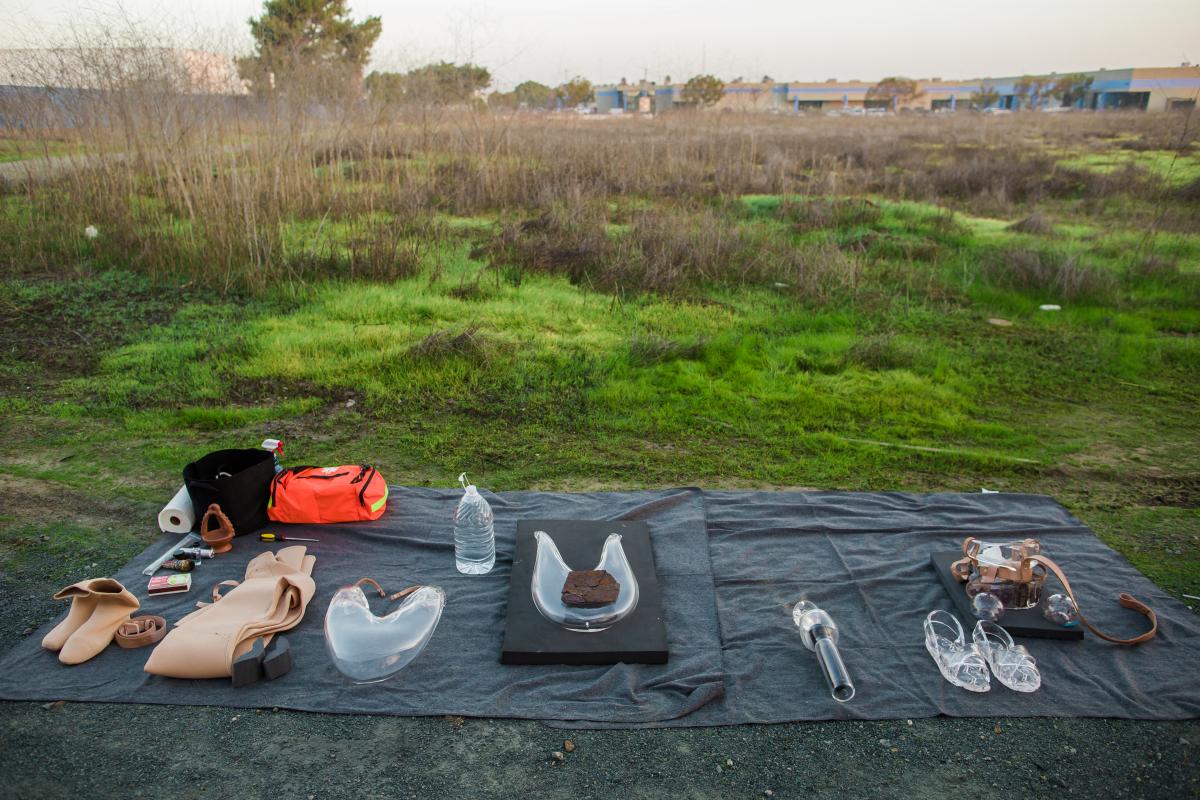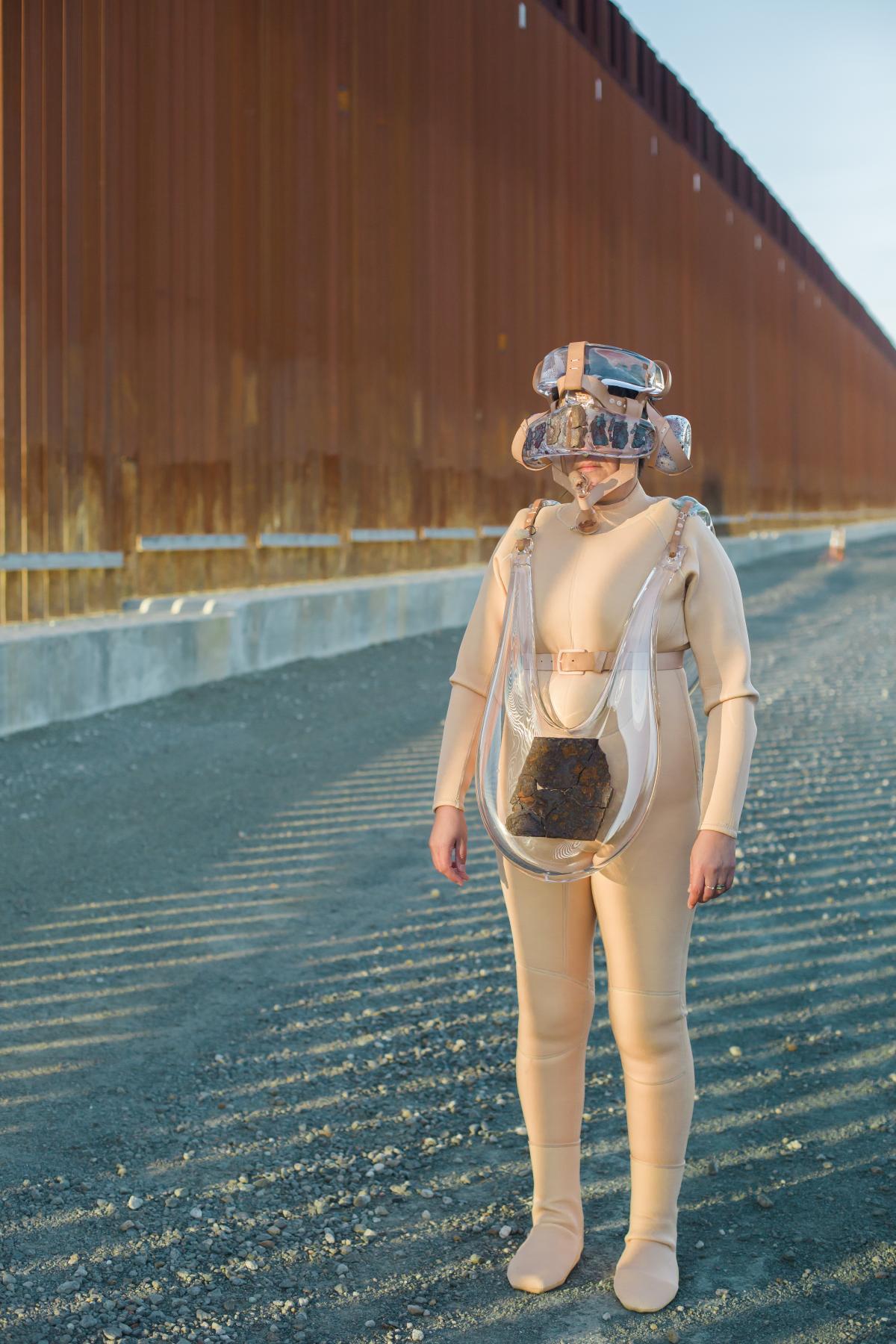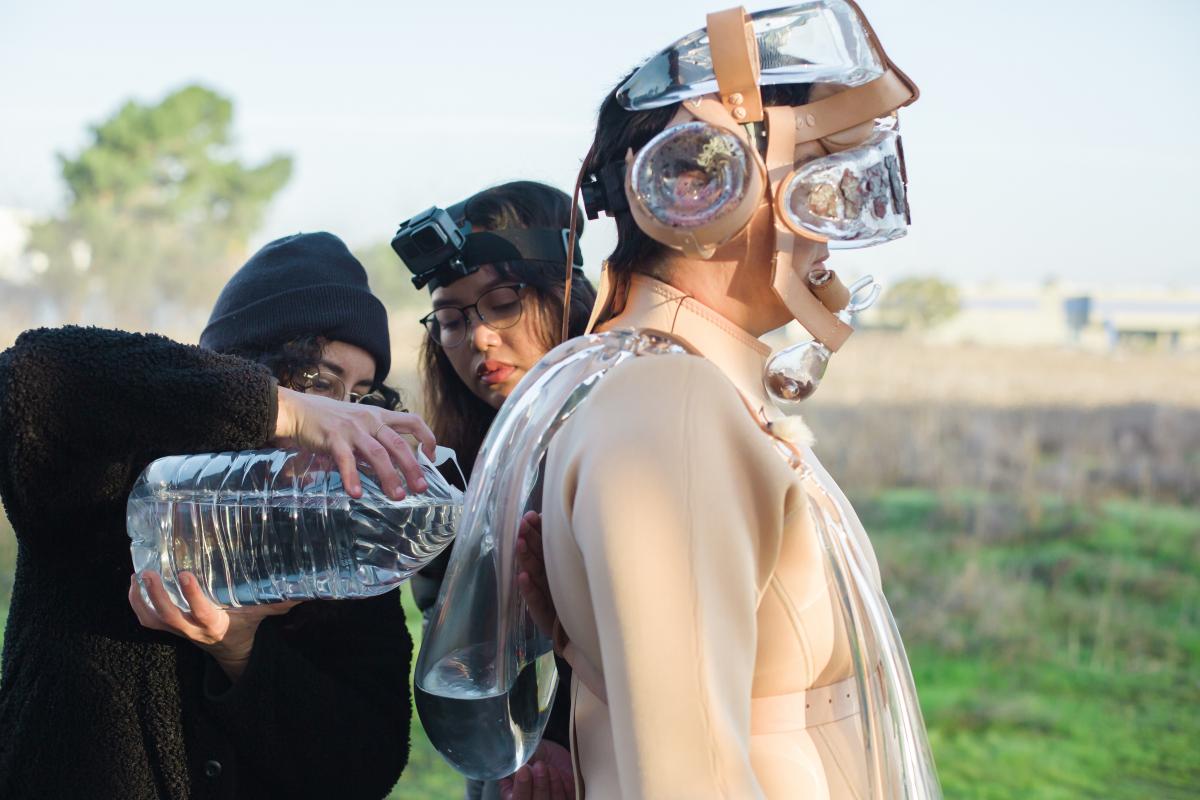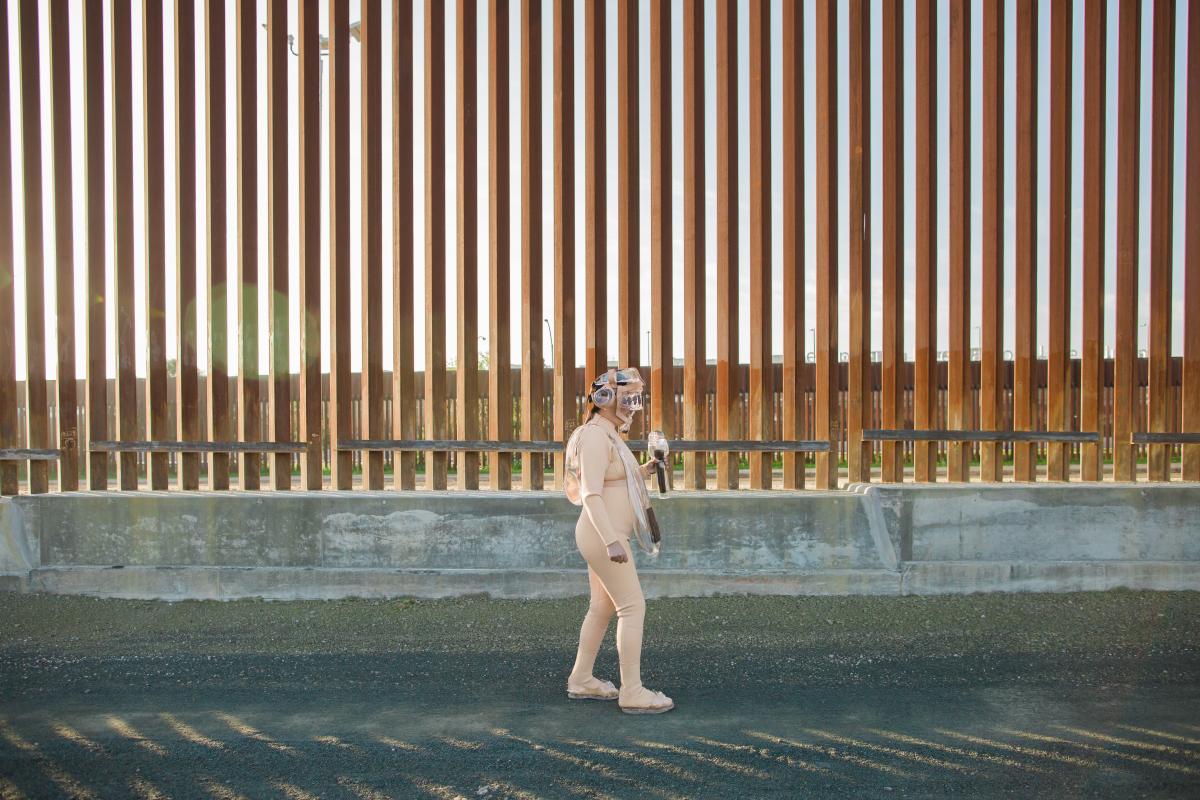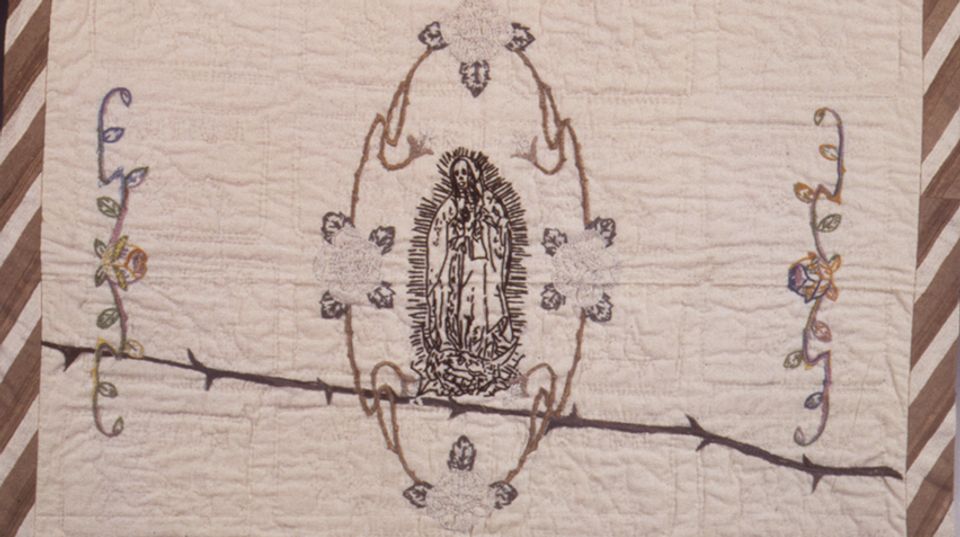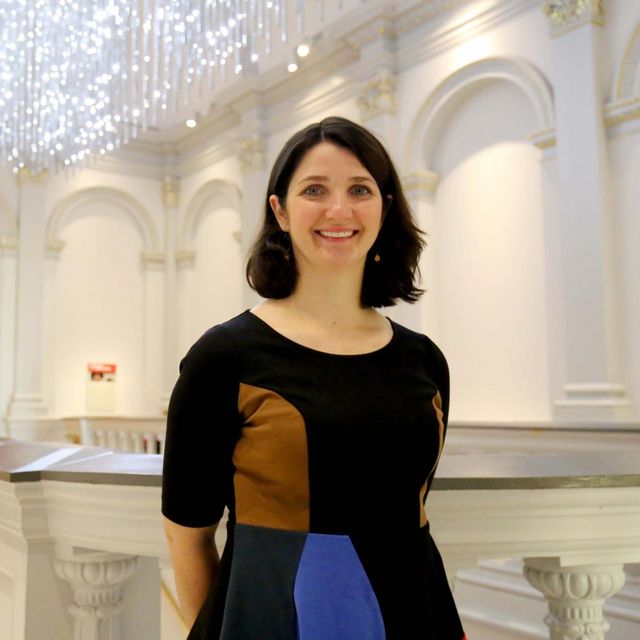
Artist Tanya Aguiñiga grew up in the United States/Mexico borderland. She was born in San Diego and lived with her family in Tijuana. Every day, Aguiñiga crossed the border to attend a public school in San Diego. Aguiñiga’s home life and her family shaped her understanding of craft and design. The handmade objects in her home were sturdy and practical, but also colorful and decorative. Even more, they carried intergenerational wisdom. “The objects our ancestors made still have lessons within them,” the artist observed in a 2022 interview.
For much of her artistic career, Aguiñiga has drawn from personal experiences to challenge the utility of boundary lines and open up the borderlands as a space for reflection, resistance, and convening. The exhibition Disrupting Craft: Renwick Invitational 2018, which surveyed Aguiñiga’s boundary-defying work in furniture, jewelry, textiles, and social practice, featured the recently completed Quipu Fronterizo/Border Quipu. This multi-year, community-engaged project began in 2016 at a familiar place, the San Ysidro Port of Entry, a border crossing station between San Diego and Tijuana. There, Aguiñiga and a team of volunteers invited commuters to make two knots and share their experiences at the border. The knots were knotted together in homage to a quipu, an ancient Andean recording system. Ultimately, Aguiñiga brought the project across the length of the U.S.-Mexico border, involving thousands of people. Quipu Fronterizo/Border Quipu (2016-2018) became an archive of the people and their impressions of the borderlands.
Aguiñiga conceived Metabolizing the Border in 2018, soon after she completed a three-week road trip along the Texas/Mexico border, the final leg of her Border Quipu project. Over the course of two years, the artist absorbed thousands of border stories at a time when federal anti-immigration policies proliferated. Beginning with a campaign promise to build an imposing border wall, President Trump later enacted the “Zero Tolerance” program that separated children from their families and terminated the Deferred Action for Childhood Arrivals (DACA) program. After years of art-based advocacy in increasingly bleak circumstances, the conclusion of the Border Quipu necessitated a time for personal healing, an opportunity to think through and process—metabolize—her fraught experiences at the border.
Aguiñiga recalled in a 2019 interview in American Craft, “I wanted to figure out how to force someone to deal with this reality through all the senses, to experience metabolizing trauma related to the fence, and also to personally deal with how I can keep going back over and over to the border, how my body can actually survive that.” With this in mind, Aguiñiga gathered rusted fragments of the steel fence between Tijuana and San Diego and brought them to the evergreen campus of Pilchuck Glass School, located on a former tree farm in Washington. This break from the border led to a breakthrough. At Pilchuck, she made the wearable components of her most transgressive project to date, Metabolizing the Border (2018-2020).
Aguiñiga worked with skilled Pilchuck artists to embed fragments of the border into a suit of wearable glass elements. The wearables processed the border through her five senses: The headpiece, its design inspired by a virtual reality headset, focuses the sense of sight through the ocular lens and the sense of sound through the ear amplifiers. A breath distiller processes the senses of taste and smell. Glass huaraches, a glass-encased flashlight, and a blown-glass cloak exaggerate the sense of touch and movement. The glass sandals are modeled after tire-soled huaraches that rural and Indigenous people wear in Mexico and Central America. The tactical flashlight resembles those used by the U.S. border patrol agents for nighttime surveillance. The cloak references the tilma of San Juan Diego, a significant spiritual and national symbol of Mexico. The artist also wore a neoprene jumpsuit for protection.
In January 2020, Aguiñiga wore the suit in a performance along the U.S.-Mexico border fence. For 90 minutes she walked. The journey was painful, intimate, and designed to fail. Thirty minutes in, her glass huaraches began to break beneath her feet. The impractical glass huaraches draw comparison to the many immigration laws and policies that are not actually designed to support migrants. The broken huaraches give presence to those migrants who did not make their journey across the border. Along similar lines, Aguiñiga’s backpack contained water as an offering to migrants who perished while crossing the desert. Every step Aguiñiga took metabolized these perils and every step was made in defiance of the steel fence. While the fences have divided the borderlands for generations, Aguiñiga illuminated a path towards regeneration and cooperation.
In 2022, SAAM opened the exhibition This Present Moment: Crafting a Better World that explores the relevance of craft in contemporary culture. The artworks included in the exhibition provide moments of reflection—prompting questions on the very meaning of craft and its possibilities for making a more relational, empathetic, and resilient world. Metabolizing the Border, which is a part of This Present Moment, was jointly acquired by SAAM and the Cooper Hewitt, Smithsonian Design Museum the same year. The work allows both museums to broaden conversations about the history of the U.S.-Mexico border and the people whose lives are continuously shaped by its dominating presence.
Metabolizing the Border also encouraged me to consider the Renwick Gallery’s proximity to power. Its building is just steps from the White House, where border policies often originate. And yet, the everyday real happenings in the borderlands are often abstracted by political rhetoric and sensationalized stories in the news. Aguiñiga asks us to see the border, reflect on it, and know her story. Her work carries forward the wisdom of her family and her home to make a better world.














